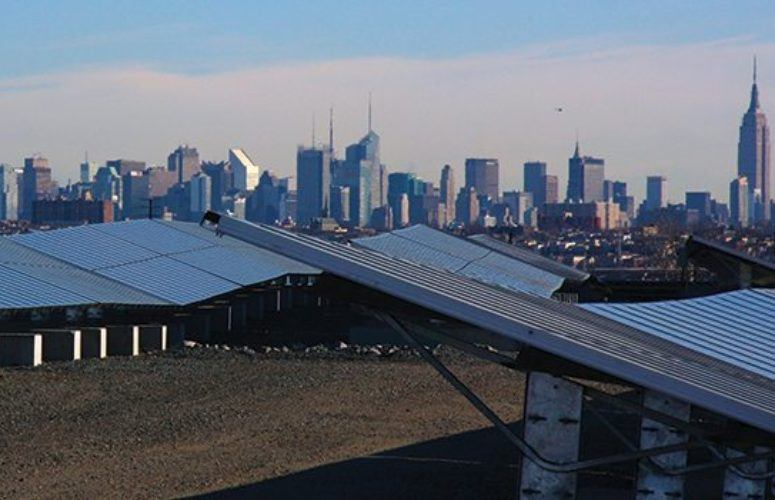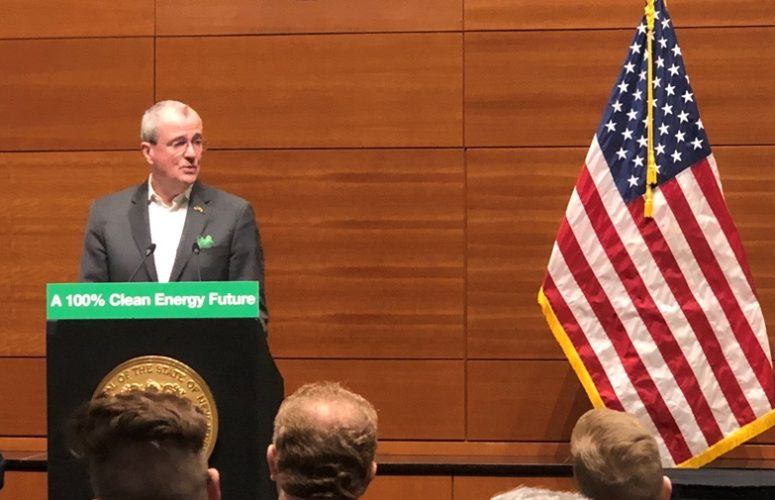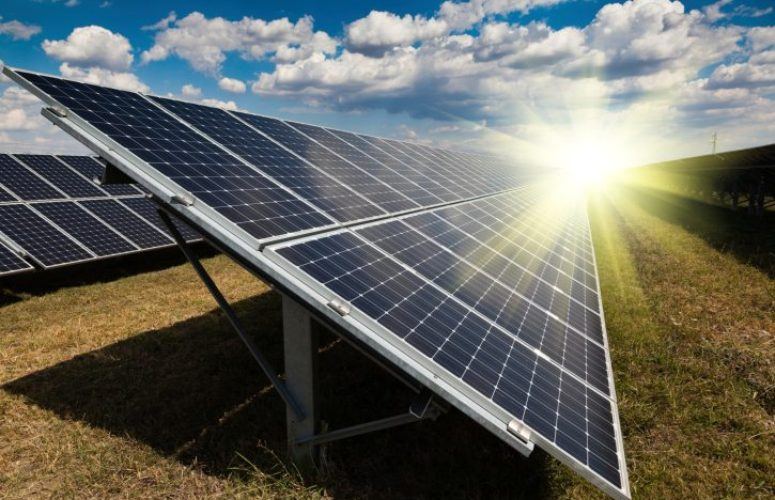
NJ’s Energy Master Plan and Your Business
Exploring the New Jersey Energy Master Plan’s goals, and how your business can help achieve them (and simultaneously save money).
By George N. Saliba, Managing Editor On Apr 25, 2016New Jersey’s Energy Master Plan has wide-ranging aspirations, including: driving down the cost of energy for all customers; promoting a diverse portfolio of new, clean, in-state generation; rewarding energy efficiency and energy conservation and reducing peak demand; capitalizing on emerging technologies for transportation and power production; and maintaining support for the Renewable Energy Portfolio Standard. Measurable progress has been achieved on all five fronts via the efforts of government, utilities, and commercial and residential customers.
Overall, Garden State companies will want to learn how they can avail themselves of both energy-related technologies and government incentive programs that can reduce energy costs and improve the environment while also meeting the Energy Master Plan’s goals.
First, businesses should know there are no hard-paternalism rules regarding energy use, and if companies choose to use old technologies and leave their lights on 24/7, they may do so. That said, it seems no informed business owner would want to do that, given the cost reductions that can be realized via even minimal planning.
Of note, market-shift dynamics have changed the way the New Jersey Board of Public Utilities (BPU) administers renewable energy and energy efficiency programs, and have also affected certain state policy directions. Early on, many of the state’s energy-related incentives were aimed at residential customers, yet the majority of energy consumed in New Jersey has always been by commercial and industrial ratepayers. More equity now exists, in the sense that businesses – all of which pay societal benefits charges – can today better access energy incentive programs and funding.
While many business owners are extraordinarily busy marketing and selling their products or services and addressing a host of labor and regulatory concerns (to name just a few issues), this article aims, in part, to make energy a top-of-mind priority, and explain the energy-savings process.
Reducing Consumption
As Sara Bluhm, vice president of energy and environment at The New Jersey Business & Industry Association (NJBIA), says, “The cheaper watt is the one that you don’t have to use.” If a company can reduce its energy use, immediate savings can be achieved. Simply replacing incandescent light bulbs with new, energy-efficient bulbs, for example, can realize up to an 80 percent reduction in energy use. New bulbs are designed to last a long time, and also yield a relatively rapid return on investment.
Wayne Pfisterer, president of Pfister Energy, takes a broad view. “A new business owner should begin by completing an energy audit,” he says. “The first step is to understand how efficiently [the] building is presently being managed. Next is identifying any systems that might be able to be upgraded or monitored/controlled. Then, it is important to review past utility bills and understand trends and profile usage. With this knowledge, [a business] may begin to understand how to implement energy management and energy efficiency, as well as the feasibility of adding renewable technologies.” Pfisterer stresses that lighting retrofits and control systems are usually the easiest steps with the fastest payback periods.
An array of companies offer energy audits as part of their services. End-users may consider: purchasing energy from a third party; altering when they use electricity (e.g., manufacturing during off-peak hours); again, using energy-efficient lighting/controls; implementing combined heat and power (CHP); or erecting solar panels and/or other renewable energy iterations. Each business’ scenario is unique, and trained professionals can best guide a business toward cost-cutting and helping the environment.
Bridgewater-based Noveda Technologies offers technology products that, in part, allow end-users to monitor their facility’s energy use from anywhere in the world. Govi Rao, president and CEO, explains, “You have a consolidated road map, and [the end-user] has manageable milestones that show up on the [computer’s] ‘dashboard,’ every time they change a lightbulb. If [the user] makes any energy efficiency effort, it shows up on the dashboard. So, they know: Are they saving money? Or, are they not saving money?”
Rob Topolski, director/sales mid-Atlantic region, for Constellation (a company with a vast array of energy-related endeavors), says, “First and foremost, when we sit down with customers, we [determine]: ‘What is their plan? Do they have a plan?’ As we are working with our customers and prospects regarding how to help them reduce their overall energy costs, it’s interesting to see the variants of what people focus on, and whom they are [hiring] to focus on it with, because there are many different types of partners.
“Whether it is the price of natural gas or electricity, we have to find a way to [show] that price does not equal cost; we are looking at the customer’s overall cost.”
The New Jersey Business & Industry Association
NJBIA’s Bluhm explains, “One of the things [NJBIA] has done through the NJPRO Foundation is release a sustainability-for-business how-to guide. It explains basic topics and helps you think about what you may already be doing at your office, and how that can impact your energy bill and make you a good corporate citizen. For example, if you have coffee in the office for people, instead of using paper cups, use mugs. Also, when you go home at night, turn off your computers’ monitors. These [methods] can help lower your bills.
“NJBIA also helps with finding an alternative electricity supplier. We’ve had an [energy] supply program at NJBIA ever since deregulation occurred, because many companies don’t necessarily understand what they are doing when they shop competitively for power, or what are the contract terms. NJBIA takes the hassle out of that: We have a pre-negotiated contract; we have a team that is dedicated to NJBIA members. We recommend to our members: ‘Look at your bill, see if there is savings to be had, and become an informed consumer.’”
Incentive Programs
Much has been written about energy-related government incentive programs. NJ’s Clean Energy Program and the Board of Public Utilities’ approved energy efficiency and renewable energy programs, offered by regulated utility companies, are the mechanisms through which the BPU implements the policies and recommendations contained in the Christie Administration’s New Jersey Energy Master Plan.
BPU President Richard S. Mroz tells New Jersey Business, “NJ’s Clean Energy Program (CEP) and the Board’s Office of Business Ombudsman work closely with businesses, along with government and institutional entities, to guide them through the various energy efficiency program offerings and help them determine which opportunities are best for [a] particular business. In fact, the Business Ombudsman’s Office and CEP staff provide on-site visits when necessary to gain a better understanding a business’ current needs and to discuss future growth plans that may impact which program(s) may be the most beneficial for a particular business.”
Either on its own – or with professional assistance – a business may visit www.njcleanenergy.com for comprehensive details regarding suitable incentive programs.
Utilities
As for utilities’ role in achieving the New Jersey Energy Master Plan’s goals, Ralph LaRossa, president and COO of Newark-based PSE&G, says, “We step in as a utility and provide energy efficiency solutions. A specific example of that is when we have gone into hospitals and upgraded their facilities. As a result of those upgrades, we have lowered their costs. For consumers who use those hospitals, we are lowering their costs, because it is a pass-through and part of the operating expenses of the facilities. We do the same thing for municipal buildings [and] other, general-use facilities, when those buildings are, in some way, shape or form, supported by taxpayers. While we do like to [implement] some of the individual energy-efficiency programs, much of that is done through [NJ’s Clean Energy Program]. … Right now, we have been really focused on hospitals, municipal buildings and multi-use buildings.”
LaRossa adds, “The hospitals would see the [upgrades] reflected in their [electric] bills, and then we would recover some of the costs from the rest of the ratepayers. Policymakers feel that this is a way to help taxpayers, down the road.”
Meanwhile, through PSE&G’s “Solar 4 All” program, the utility is installing solar panels on the tops of telephone poles, and in brownfields and landfills. In this way, PSE&G is providing its customers throughout the state with electricity generated from those resources (the utility now has approximately 125 megawatts of such solar power, and LaRossa says PSE&G seeks to expand the Solar 4 All program even further).
At a different utility – New Jersey Natural Gas (NJNG) – Kathy Ellis, chief operating officer, says, “NJNG has been offering BPU-approved energy-efficiency programs through our SAVEGREEN Project® (SAVEGREEN), since 2009. We have been able to maximize the benefits of customers’ energy efficiency investments by offering programs that complement and enhance those available through the state’s [CEP].”
Since its inception, SAVEGREEN grants, incentives and the On Bill Repayment Plan (totaling over $126 million), have helped more than 41,000 customers reduce energy consumption and lower their energy bills. This program directly supports the state’s Energy Master Plan. Overall, SAVEGREEN has helped generate more than $300 million in economic activity by working with the nearly 2,500 contractors that have participated in the project.
Meanwhile, NJR Clean Energy Ventures (NJRCEV), a separate subsidiary of New Jersey Resources (New Jersey Natural Gas is another subsidiary), has invested nearly $500 million since its inception in 2009 in solar and onshore wind projects, with a total capacity of nearly 200 megawatts, providing residential and commercial customers with low-carbon solutions.
To date, NJRCEV has more than 4,000 Sunlight Advantage customers, with generation capacity of more than 36 megawatts (MW). The Sunlight Advantage is NJRCEV’s residential solar lease program. It has also invested in 22 commercial solar systems with a combined generation capacity of over 82 MW.
Conclusion
Noveda Technologies’ Rao concludes, “I do want to stress: Having an [Energy Master Plan] is fantastic; we need to communicate this, and get all the [parties] in New Jersey excited through ‘education, education, education,’ and inspiring people to do their part. I think that will be phenomenal. New technologies [are being invented] for lowering consumption or transitioning to renewable energy. It is going to take the entire ecosystem to make an impact. I think we have a great start. Now, [it’s time to] deploy it across the board.”
Related Articles:






